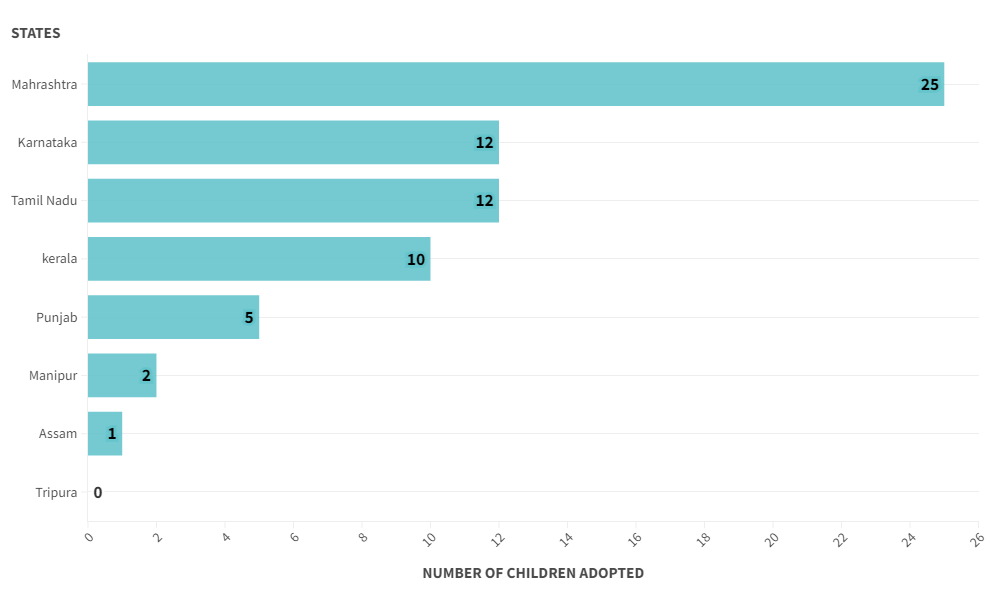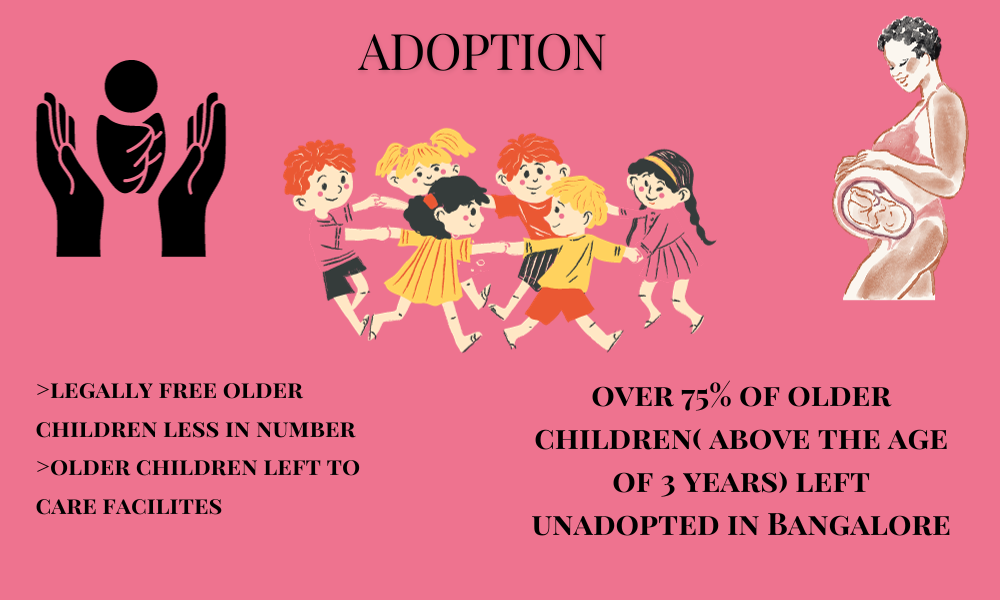Experts say that a decline in adoption of older children can be linked to family bonding and problems around acceptance into a new family environment.
Out of 30 infants and children who are up for adoption in Bangalore, over 75 percent of them are older children who are left behind. Apart from the 30 in the city, 418 children are up for adoption in the state and 3,187 in the country this year.
The adoption rates among older children have dropped in the last seven years. Arundhati, an official from the State Adoption Resource Agency (SARA) said, “Families wish to take in only a few month-old babies rather than any child above the age of two or three years of age. It leaves out a lot of children who seek a family’s bonding, love and support.”
Shekhar, a father of three said, “I adopted my son when he was 10 months old. I had the chance of adopting another girl child who was four years old but my extended family stood against it.” He added, “I understand that bonding might be an issue with older children than with infants but it is possible with counselling and family support.”
The rate of adoption depends on the availability of legally free children and on the criteria mentioned in state laws. It is linked to the number of children found/admitted/abandoned in hospitals. Admitted or abandoned babies and children are brought to the Child Welfare Committee (CWC) for declaring them as legally free children for adoption.
Vishwanath, a father who adopted a seven-month old child in 2001 spoke about other problems in the adoption processes. He said, “As a family when we were in London, we noticed that a lot of older children get adopted more than just infants, but here there is a strong social stigma against adoption itself.” He added, “With great difficulty we adopted our first child, we stood against the entire family to make it happen, it was worth it.”
Arundhati said, “The demand is high in Bengaluru but legally free children are very few in number.” She added, “Some children are still under custody of families and relatives if not parents, which means that they leave the child in care facilities for over two years or more and still do not give them up legally.” She added, “Eventually it leads to those children unable to be legally free in order to be adopted by well and fit families. Single parents, mostly single mothers, refuse to give up the child without understanding the feasibility and requirements to raise a child.”
Ananya, a 32- year-old who wanted to adopt a child said that adopting a child against social differences that come from within the family is a challenge in itself. To bring a person into the family with open arms shouldn’t be as difficult as it is. It is a matter of creating a safe environment for the child who is entrusted to the family, she added.
Radhika, a mother of two who adopted a girl child said, “We went through a private agency named Ashraya to adopt our child, the agency appointed a lawyer from their side. They had regular checks and procedures to check our financial ability and family environment—the stability between husband and wife.”
The government stopped adoption from private agencies for safety reasons in 2011.

Riya, Radhika’s daughter who is now 22 years old has friends from her adoption agency who have not been adopted. She said, “It is deeply saddening to see many children who never got and still do not get the opportunity to be brought into a good family even though there is potential. Children are sent to care centres instead of families. They may get basic requirements but a family’s bond is something so many children wish to have.” Fortunately, for her she had been adopted when she was just a six-month-old baby, she added.
Dr. Divya Kumawat, the director of Kalpari Art and Mind who is a child psychologist said, “Older children who are adopted are comparatively difficult to counsel. How the family defines their moral values, ethics and upbringing can be different for them. Parents tend to prefer a few months old baby assuming a better bonding with them as it is easier to understand the child and raise them in a manner that is mindful and sensitive.”




